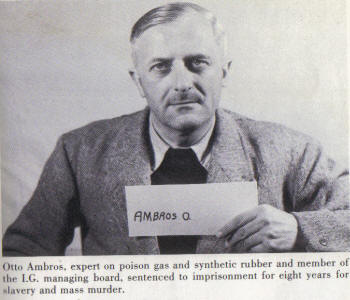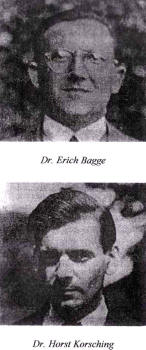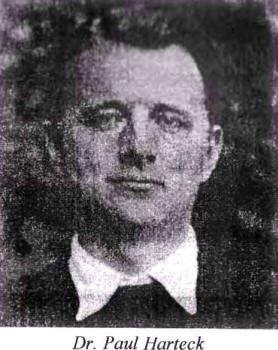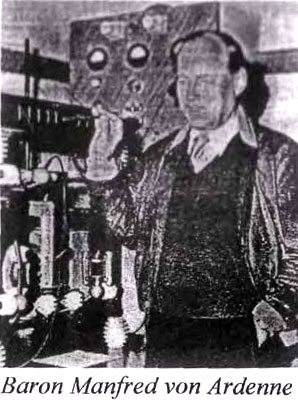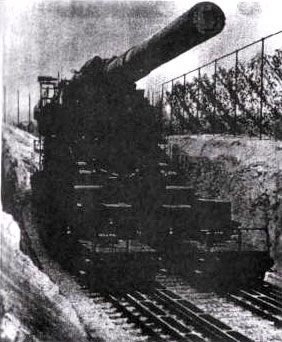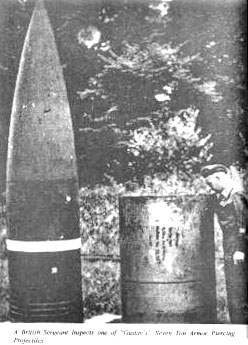Chapter 2:ELECTRICITY, SLAVES, AND "BUNA"
These are the basic facts, and the central question, that have plagued every researcher into the subject of German secret weapons research since the end of World War Two. How indeed could Germany have not obtained the atom bomb? The thesis of this book, among many others, is radical, namely, that Germany did acquire atomic bombs during the war. What must be explained, rather, is why Germany apparently did not use this and other dreadful weapons available to her, or, if she did, why we have not heard about it. But of course, to maintain such a radical thesis, one must argue persuasively that Germany had the bomb to begin with. 1 Carter Hydrick, Critical Mass: the Real Story of the Atomic Bomb and the Birth of the Nuclear Age, Internet published manuscript, http://saba.fateback.com/criticalmass/begin.html, 1998, p. 21. Hydrick's research is painstaking and meticulous, and his speculative reconstructions of the detailed history of the war's end merit close attention. It is earnestly hoped he will eventually publish this important work in book form. 2 Thomas Powers, Heisenberg's War, p. viii. This implies a relatively easy set of corroborative evidence to search for. If Germany had a uranium based atom bomb, one must look for the following things:
(2)
(b)
(c)
(d)
(3)
(4)
(5)
Fortunately, all these aspects of the investigation afford the researcher several clues, all of which corroborate the existence, at the minimum, of a very large and successful German uranium refinement and enrichment program during the war. We begin by looking in a very unlikely spot: Nuremberg. At the War Crimes Tribunal after the war, several formerly elegantly attired business executives and senior managers of the huge, enormously powerful, and quite notorious German chemicals cartel, I.G. Farben A.G. (Interessen-Gemeinschaft Farbenindustrie AG), had their time in the dock. They story of this early "global corporation", its bankrolling of the Nazi regime and its central role in its "military-industrial complex", as well as its role in producing the deadly Zyklon-B poison gas for the death camps has been chronicled elsewhere.3 3 Joseph Borkin, The Crime and Punishment of I. G. Farben; Anthony C. Sutton, Wall Street and the Rise of Hitler. I.G. Farben had been more than just complicit in Nazi atrocities by its construction of a large Buna, or synthetic rubber, production plant at Auschwitz in the Polish part of Silesia during the war, committing atrocities against the concentration camp victims during its construction and operation. For Farben, the choice of Auschwitz as the site for the Buna plant was logical, and made for "sound business reasons." The concentration camp nearby the site selected for the enormous facility guaranteed an endless supply of slave labor for its construction, and, conveniently, when the slaves had exhausted themselves in its secret construction and operation, they could be permanently "laid off". Farben director Carl Krauch assigned one of its top Buna synthetic rubber experts, Otto Ambros, to investigate the sites for the proposed plant and make a recommendation. The site eventually selected - Auschwitz - was "particularly suited for the installation" over a competing site in Norway for one very important reason. A coal mine was nearby and three rivers converged to provide a vital requirement, a large source of water. Together with these three rivers, the Reich railroad and autobahn afforded excellent transportation to and from the area. These were not decisive advantages, however, over the Norwegian site. But the Silesian location had one advantage that was overwhelming: the S.S. had plans to expand enormously a concentration camp nearby. The promise of an inexhaustible supply of slave labor was an attraction that could not be resisted.4 The selection having been approved by the Farben board, Krauch then wrote a top secret letter to Ambros:
4 Borkin, op. cit, p. 115. I.G. Farben Auschwitz "Buna" Expert Otto Ambros With the Wehrmacht poised to blast its way into Russia soon, and sensing enormous profits to be made in the effort, the Farben directors decided to finance the enormous plant privately, rather than in concert with the Nazi regime, earmarking 900,000,000 Reichsmarks - nearly $250,000,000 in 1945 dollars or over $2 billion in contemporary dollars - to the project. It was to be the Buna plant to dwarf all other Buna plants. However, as the testimony at the Nuremberg War Crimes Tribunal unfolded, the Auschwitz Buna factory emerged as one of the big mysteries of the war, for in spite of the enormous sum of money set aside for its construction, in spite of the personal blessings of Hitler, Himmler, Goring, and Keitel, and in spite of an endless supply both of skilled company contract laborers and an endless supply of slave labor from Auschwitz, "the project was continually disrupted by shortages, breakdowns, and delays.... Some malign influence seemed to be affecting the entire operation" to such an extent that Farben appeared to be faced with the first failure in its long corporate history of technological success.6 By 1942, the whole effort was viewed by many directors not only as a failure, but as a near disaster.7 6 Ibid., p. 118. Disaster notwithstanding, the huge synthetic rubber and gasoline plants were completed, after 300,000 concentration camp workers had passed through the corporations construction mills. 25,000 of these inmates were simply and cruelly worked to death from exhaustion. The plants themselves were nothing less than gigantic. So gigantic, in fact, that "they used more electricity than the entire city of Berlin."8 During the war crimes tribunals, however, it was not this gruesome catalogue of facts about the plant that puzzled the Allied prosecutors. What puzzled them was that, in spite of such an enormous investment of lives, money, and material, "not a single pound of Buna was ever produced"9 The Farben directors and managers in the docks were almost obsessively insistent on this point. More electricity than the entire city of Berlin - the eighth largest in the world at that time - to produce absolutely nothing? If this was true, then the enormous outlay of capital and labor and the huge electrical consumption contributed nothing significant to the German war effort whatsoever. Needless to say, there is something very wrong with this picture.8 Ibid., p. 127. None of it made sense the, none of it makes sense now, unless of course the plant was not a Buna plant at all... When I.G. Farben began its construction of the "Buna" plant at Auschwitz, one of the more unusual events to being the process was the removal of over 10,000 Polish inhabitants from their homes to make way for the thousands of German scientists, technicians, contract works and their families who were moved into the area. The parallel with the Manhattan Project in this respect is obvious. It is simply unbelievable in the extreme that, with such a technical and scientific effort on the part of the corporation with the most successful track record in advanced technologies and production facilities, and a plant consuming more electricity than Berlin, that nothing whatsoever was ever accomplished or produced.10 One contemporary researcher who is also mystified by the whole "Buna plant affair" is Carter P. Hydrick. Contacting Ed Landry, an expert in the field of synthetic rubber production from Houston, Texas, and informing him of the I.G. Farben plant, its huge electrical consumption, and the directors' claims that it produced no Buna at all, Landry responded: "That was not a rubber plant - you can bet your bottom dollar on that." Landry simply does not believe the primary purpose of the "Buna plant" was the production of rubber at all.11 How then to account for the enormous electrical consumption and post-war insistence of Farben directors that the plant never produced any synthetic rubber at all? What other technology would require such enormous electrical power consumption, such an enormous technical and unskilled labor staff, and such close proximity to plentiful water supplies? At that time, there was only one other technological process that could conceivably require all these things. Hydrick puts the case this way:
So why call it a Buna plant? And why protest so vociferously to the Allied prosecutors that the plant never produced any Buna at all? One answer is that with so much labor being provided by the slave labor from the SS concentration camp nearby, the plant fell under SS security jurisdiction, and an effective "cover" would therefore been at the head of the list of Farben's and the SS' concerns. 10 Carter P. Hydick, op. cit., p. 34. In the unlikely event, for example, of an escape by one or more inmates, the "Buna" plant would have uttered a plausible cover story should the Allies ever learn of it. Since isotope separation would have been such a secret and costly process, "it becomes hard to imagine the so-called Buna installation being anything but a cover for a uranium enrichment facility." 13 Indeed, there is odd corroboration as we shall see from the Farm Hall transcripts. The "Buna plant" became the cover story to explain the construction to the laborers - in the event that explanations were offered at all! - and to the Farben company contract employees who were "out of the loop."In this respect, the delays in its construction and the difficulties Farben encountered are also best explained by its being a huge isotope separation facility, not unlike those the Manhattan Project encountered when constructing its own similarly sized plant at Oak Ridge, Tennessee. Like its American counterpart, shortages and delays and technical difficulties dogged the project from its inception, and like its American counterpart, these delays were experienced in spite of its enjoying a similarly privileged position in the hierarchy of Nazi priorities as Oak Ridge.14 13 Hydrick, op. cit., p. 38. So the strange assertions and behavior of the Farben directors on trial after the war begins to make sense. Faced already with an emerging "Allied Legend" about German incompetence in nuclear matters, the Farben directors and managers were perhaps trying in a subtle way to "set the record straight" in the only way that would not overtly challenge that Legend. They were attempting, perhaps, to provide a clue as to the real nature and achievements of the German bomb program that would only be noticed over time and with careful scrutiny. The selection of the site - near the concentration camp at Auschwitz and its hundreds of thousands of hapless victims - also makes strategic, if not gruesome, sense. Much like dictators of more recent times, it would appear that the Nazi regime had placed the facility near the camp in a deliberate attempt to use "human shields" to protect the facility from Allied bombing. If so, the decision was a correct one, as no Allied bombs ever fell on Auschwitz. The plant was dismantled only in the face of the approaching Russian armies in 1944.
The Isotope Separation Facility at Oak Ridge, Tennessee To establish that the "Buna plant" was most likely an isotope separation facility, however, requires that one prove the Germans possessed the technological means for isotope separation. Additionally, if such technology was employed at the "Buna plant", then it implies that there was more than one atom bomb project in Germany, for the "Heisenberg" wing of the project, and all the subsequent debates that surround it, are well known. So in addition to ascertaining whether or not Germany possessed the technology to separate isotopes, one must also attempt a broad reconstruction of the actual outlines and relationships of the various German atom bomb projects. By stating the problem in this fashion, one is again confronted by the post-war Allied Legend:
15 Hydrick, op. cit., p. 3. Obviously, Hydrick himself does not appear ready to go all the way and acknowledge that the Germans actually successfully tested an atom bomb before its American Manhattan project counterpart produced and tested one. Did Germany have isotope enrichment technology available? And could it have employed that technology in sufficient quantity to make significant amounts of enriched uranium available for a bomb program? There can be no doubt that Germany certainly had a sufficient supply of uranium ore, for the region of the Sudetenland - annexed by Germany after the infamous Munich conference in 1938 - is a region known for its rich deposits of some of the highest grade uranium ore in the world. The region, coincidentally, lies close to the "Three Corners" region of Thuringia in south central Germany, and therefore close to Silesia and the various installations that will be examined in parts two and three. So the Farben directors may have had another reason for choosing Auschwitz as the site for an enrichment facility. Auschwitz was close not only to water, an adequate transportation network, and abundant labor, it was conveniently close to the uranium fields of the German-Czech Sudentenland. These facts raise a speculative possibility. It is well-known that the announcement by nuclear chemist Otto Hahn of his discovery of nuclear fission did not occur until after the Munich conference and the surrender of the Sudetenland to the Third Reich by Chamberlain and Daladier. But might the reality have been something different? Might, in fact, the discovery of fission taken place before the conference, and its results withheld by the Reich until after Europe's only uranium supply was firmly in Nazi hands? It is perhaps significant that Adolf Hitler was prepared to go to war over the matter. In any case, before we investigate the question of the technology available to the Germans, we must first answer the question of why they apparently concentrated almost exclusively on obtaining a uranium atom bomb in their program. After all, the American Manhattan Project had elected to pursue both a uranium and a plutonium bomb. The theoretical possibility of plutonium bombs - "element 94" as it was officially called in German documents of the period - was certainly known to the Nazis. And, as the early 1942 memorandum to the Heereswaffenamt also makes clear, the Germans also knew that this element could only be synthesized in an atomic reactor. So why did they apparently concentrate only on a uranium bomb and isotope separation and enrichment almost exclusively? With the destruction of the Norwegian heavy water plant at Ryukon in 1942 by Allied commandos, and German failures in obtaining sufficient purity of graphite for use as a moderator in a reactor, the only other moderator available to them - heavy water - was now in critically short supply. Thus, according to the Legend, a functioning reactor leading to a critical mass supply of "element 94" was not feasible to them in the projected span of the war. But let us, for a moment, assume that the Allied commando raid had not taken place. The German failures with graphite moderated reactors were already a matter of record, and it was obvious to them that there were significant technological and engineering hurdles to be surmounted before a reactor came into production. On the other hand, the Germans already had the necessary technology to enrich U 235 for a bomb, and thus uranium enrichment constituted the best, most direct, and technologically feasible route to the acquisition of a bomb within the expected span of the war for the Germans. More on that technology in a moment.One now has to deal with yet another component of the Allied Legend. American progress in the plutonium bomb, from the moment Fermi successfully completed and tested a functioning reactor in the squash court at the University of Chicago, appeared to be running fairly smoothly, until fairly late in the war, when it was discovered that in order to make a bomb from plutonium, the critical mass would have to be assembled much faster than any existing Allied fuse technologies could accomplish. Moreover, there was so little margin of error, since the fuses in an implosion device would have to fire as close to simultaneously as possible, that Allied engineers began to despair of making a plutonium bomb work. Thus one is confronted with a rather interesting scientific picture, one directly in contradiction to the traditional history of the bomb. If the Germans indeed had a successful and large scale uranium enrichment project running ca. 1941-1944, and if their bomb project was devoted almost exclusively on acquiring a uranium atom bomb, and if at the same time Allied engineers were coming to realize the problems inherent in plutonium bomb design, then this means, in one respect at least, that the Germans have not wasted time or effort" on what is admittedly a more difficult task, namely, the plutonium bomb. As we shall see in the next chapter, this fact gives rise to serious doubts about the state of "success" in the Manhattan Project in late 1944 and early 1945.
Difficult as it seems to accept, the fact of the matter is that Nazi Germany had "at least five, and possibly as many as seven, serious isotope separation development programs underway."16 One of these, an "isotope sluice" developed by Drs. Bagge and Korsching, two of the scientists interred at Farm Hall, was brought to such a state of efficiency by mid-1944 that a single pass of uranium through it would enrich it to four times that produced by a single pass through the gaseous diffusion gates at Oak Ridge!17 16 Hydrick, op. cit., p. 25. 17 Ibid.Contrast this with the end-of-war difficulties being faced by the Manhattan Project. Even with the enormous gaseous diffusion plant at Oak Ridge, stocks of fissionable uranium were still woefully short of critical mass requirements as late as March 1945. Passes through the Oak Ridge facility would enrich uranium from approximately a 0.7 percent concentration in around 10-12 percent, and thus the decision was taken to use the Oak Ridge production as feedstock for Earnest O. Lawrence's far more efficient and effective "beta calutrons," which were essentially a cyclotron with separation tanks, using electromagnetic means to enrich and separate isotope via mass spectrography.18 Consequently, one may assume that if a similar quantity of Bagge and Korsching's "isotope sluices" were used en masse, the result would have been a more rapid build-up of enriched uranium feedstock. Similarly, the more efficient German techno logy may also have allowed for relatively smaller separation facilities. Good as it was, however, the isotope sluice was not Germany's most efficient or technologically advanced means of uranium enrichment. This was the centrifuge, and its progeny - designed by nuclear chemist Paul Hartek - the ultracentrifuge.19 American engineers, of course, knew of this possibility, but there was a significant drawback they had to face: the highly corrosive uranium gases used in this technology made it unfeasible to rely on centrifuges as a means of enrichment. On the German side, however, this was a solved problem. A special alloy called Bondur was developed precisely for use in centrifuges.20 But even centrifuge technology was not, however, the best available method the Germans had. 18 Hydrick, op. cit., p. 25. 19 The same technology was captured by the Soviet Union and further perfected in its own bomb program. On the post-war German side, such ultra-centrifuges were provided by the Siemens company and other German firms first to South Africa in its own bomb program (q.v. Rogers and Cervenka, The Nuclear Axis: West Germany and South Africa, pp. 299-310). In other words, the technology is not only originally German, but is advanced enough to be employed today. It should be noted that, as of the mid-1970s, several of the Germans involved in the corporate development of centrifuge enrichment facilities for the Federal Republic (West Germany) had ties to the third Reich's bomb project, among them Prof. Karl Winnacker, a former member of the I.G. larben board (p. 300). 20 Hydrick, op. cit., p. 25. Baron Manfred von Ardenne, a rich eccentric and self-taught nuclear physicist and inventor, and his close associate of physicist Fritz Houtermanns, both correctly calculated the critical mass for a U 235 atom bomb in 1941, and with funds from Dr. Ing. Ohnesorge's money-rich Deutsche Reichspost, constructed a huge underground laboratory in his baronial manor in Lichterfelde, outside eastern Berlin.This laboratory included a 2,000,000 volt electrostatic generator and the only other cyclotron known to exist in the Third Reich besides that of the Curies in France. It is the only cyclotron acknowledged by the post-war Allied Legend.21 21 Hydrick, p. 26.
At thus juncture it is necessary to pause to examine the German bomb program more closely, for we now have evidence of at least three different, and seemingly separate, technological efforts:
(2) (3) The Bagge-Korsching-von Ardenne-Houtermanns circle, developing an array of advanced separation technologies, and apparently, via von Ardenne, tied somehow to, of all things, the German postal service! Why the Reichspost? For one thing, it afforded an effective cover for the program, which, like its American counterpart, appears to have been compartmentalized under a number of government agencies, many having no plausible connection with a large secret weapons research effort. Secondly, and more significantly, the Reichspost was awash with money, and could therefore have provided some of the massive funding necessary to the project, a true "black budget" operation in every sense. And finally, the head of the Reichspost was, perhaps not coincidentally, an engineer: Dr. Ing. Ohnesorge. It is, from the German point of view, a logical choice. Even his last name, "Ohnesorge", meaning "without sorrow or regret", is an ironic twist to the story. What was the method of separation and enrichment developed by von Ardenne and Houtermanns? Very simply, it was the cyclotron itself. Von Ardenne had invented a modification of the cyclotron - electromagnetic separation tanks - very similar to Ernst O. Lawrence's "beta calutrons" in the United States. It is to be noted, however, that von Ardenne had completed his modifications in April of 1942, whereas General Groves in the Manhattan Project would not have Lawrence's beta calutron at Oak Ridge for fully a year and a half after that!23
Von Ardenne himself is a mysterious figure, for after the war he was one of the few German scientists to deliberately opt to cooperate with the Soviet Union rather than the Western Allies. His contribution to the Soviet acquisition of the atomic bomb in 1949 was to earn him the "Stalin Prize" in 1955, the Soviet equivalent to the Nobel Prize. He was the only non-Russian and non-Soviet ever to win the prize.25 23 Hydrick, op. cit, p. 26. 24 Hydrick, op. cit., p. 27. 25 Henshall, op. cit, p. 156. In any case, Von Ardenne's work, plus that of the other German scientists working on separation and enrichment - Bagge, Korsching, Harteck and Houtermanns - indicates one thing: that there was a sound and solid basis in Allied wartime estimations of German progress and capabilities, for they were, in mid-1942, running a dead heat with the Manhattan Project, and were not "far behind" as the post-war Allied Legend would subsequently have us believe. So what is the likely scenario, as it has emerged thus far? What conclusions may be drawn?
(4)
(b)
(c)
(d)
(e)
(f)
(5)
26 Powers, op. cit., pp. 379-382. Samuel Goudsmit was at one point being considered as a member of the team that would attempt to kidnap or assassinate Heisenberg. 27 Powers, op. cit., p. 74. Powers also mentions another problematical fact concerning the Clusius-Dickel method of thermal diffusion, that we will encounter in chapter 7: "One pound of U-235 was not a daunting figure, and Frisch calculated that 1,000,000 Clusius-Dickel tubes for thermal diffusion of uranium isotopes could produce it in a matter of weeks. Such a large industrial effort would not be cheap, but the two men concluded, 'Even if this plant costs as much as a battleship, it would be worth having.'" To round out this unpleasant picture, one must also mention two further interesting facts: Von Ardenne's close associate and theoretical mentor, Dr. Fritz Houtermanns' specialty was thermonuclear fusion, indeed as an astrophysicist, he had staked his claim to fame in physics by describing precisely the type of nuclear process at work in stars. Interestingly enough, there does exist, from 1938, an Austrian patent for a device known as a "Molecular Bomb," a bomb that upon examination is an early version of a hydrogen bomb. Atomic bombs, of course, supply the necessary heat to get hydrogen atoms to collide and produce the much more enormous and terrible energies of thermonuclear hydrogen fusion bombs. Secondly, it may now clearly be seen why, of all the German scientists working on the atom bomb, that Manfred Von Ardenne was the one nuclear scientist that Adolf Hitler most often went personally to visit.28 In any case, all the evidence points to the conclusion that there was a large, very well-funded, and very secret German isotope enrichment program during the war, a program successfully disguised during the war by the Nazis, and covered-up after war by the Allied Legend. But this too raises its own questions. How close was that program to acquiring sufficient stocks of weapons grade uranium to make a bomb (or bombs). And secondly, why did the Allies after the war go to such stupendous lengths to cover it up? 28 Hydrick, op. cit, p. 29. Rose notes that Von Ardenne had written him and stated that he had never tried to persuade the Nazis to develop his process and employ it in large quantities. He then notes that the Siemens company did not develop it (Rose, op. cit., p. 140, n. 38). This would appear to be pure obfuscation on Von Ardenne's part, for it was not Siemens, but I.G. Farben, that had developed the processes and employed them in large amounts at Auschwitz. As a final note to this chapter, and a tantalizing indication of further mysteries that will be investigated subsequently in this work, there is a report, declassified by the National Security Agency only in 1978; the report is apparently a decoded intercept from the Japanese embassy in Stockholm to Tokyo. It is entitled simply "Reports on the Atom-Splitting Bomh." It is best to cite its amazing contents in their entirety, with their original breaks where they occurred in the text for transmission:
The end of this amazing intercept then reads "Inter 12 Dec 44 (1,2) Japanese; Rec'd 12 Dec 44; Trans 14 Dec 44 (3020-B)," apparently references to when the message was intercepted by American intelligence, its original language (Japanese), when the message was received, when it was translated (14 Dec 44), and by whom (3020- B).29 29 Edgar Mayer and Thomas Mehner, Hitler und die ,,Bombe" (Rottenburg: Kopp Verlag, 2002), pp. 110-114, emphasis added, citing "Stockholm to Tokyo, No. 232.9 December 1944 (War Department), National Archives, RG 457, SRA 14628-32, declassified October 1, 1978. The date of this document - after the lest allegedly seen by Hans Zinsser and two days before the beginning of the Battle of the Bulge -must have set off alarm bells in the offices of Allied Intelligence personnel both during and after the war. While it is certainly clear that the Japanese attaché in Stockholm seems to be somewhat confused bout the nature of nuclear fission, a number of startling things stand out in the document:
It is this last point that directs our attention to the most fantastic and arcane recesses of wartime German secret weapons research, for if the allegation has even a partial basis in truth, then it indicates that at some highly secret level, physics, and the esoteric, were being pursued by the Nazi regime in some very extraordinary ways.32 In this regard it is important to note that the extreme density of the material described by the Japanese envoy resembles nothing so much as a construct of modern post-war theoretical physics called "dark matter". In all likelihood his report greatly overestimates the mass of this material - if it existed at all - but nonetheless it is crucial to observe that it is material far beyond the ordinary density of matter.31 The detail of "charred bodies" and exploded ammunition certainly point to non-conventional weaponry. A fuel-air device would at least account for the charring. The tremendous heat produced by such a bomb could also conceivably detonate ammunition. Likewise, radioactive burns with its characteristic blistering effects might well have been misunderstood by Russian field soldiers and officers, who would most likely not have been familiar with nuclear energy, as the effects of poison gas. 32 To anyone familiar with the wealth of material on alternative research into the Giza compound in Egypt, the reference to Sirius will immediately conjure images of Egyptian religion, its preoccupation with death, with the Osiris myth, and to the Sirian star system. Strangely, the German-Sirian connection pops up again, long after the war, in an unusual context. In my previous book, The Giza Death Star Deployed, I mentioned the research of Robert Temple into the mysterious African Dogon tribe, a tribe of primitive peoples that nonetheless appears to have preserved an accurate knowledge of the Sirian star system for many generations, from a period long before modern astronomy knew anything about it. In that book, I noted that Temple also alleges serious Soviet KGB and American CIA and NSA interest in his book.... An odd mention, perhaps significant in the light of our later discussion of possible German involvement in scalar physics research during World War Two and after, is Temple's allegation that Baron Jesco von Puttkamer wrote him a denunciatory letter on NASA stationary, only later to retract that, stating that it did not represent an official NASA position. Temple believes that Puttkamer was one of the Germans brought to the USA during the notorious Operation Paper Clip in the days immediately following the Nazi surrender (pp. 9-10).33 33 Joseph P. Farrell, The Giza Death Star Deployed (Kempton, Illinois: Adventures Unlimited Press, 2003, p. 81). As I then go on to observe in that book, Karl Jesco von Puttkamer was no ordinary German, being a member of Adolf Hitler's military staff throughout the war as his naval adjutant to staff, beginning the war with the rank of captain and ending with the rank of admiral. Puttkamer was subsequently employed by NASA. So the investigation of the German atom bomb, via this recently declassified Japanese cable, has already led us far afield, into a realm of frightening potentialities, into a world of fuel-air bombs, gigantic artillery delivery systems, super-dense matter, the hydrogen bomb, and what seems to be a curious blend of mystical esotericism and Egyptology, and physics. Was there a German bomb? In the above context, the question seems almost plain and ordinary. If so, then given the extraordinary reports that leaked out from time to time from the Eastern Front, what other even more secret research lay behind their atom bomb projects, for evidently such research there was? But exotic super dense matter or not, according to some versions of the Allied Legend, the Germans never had enough fissile weapons grade uranium to begin with. We will now investigate the problem of the "missing uranium." "Heavy Gustav " or "Dora " the 31 1/2 Monster that Hurled Five and Seven Ton Projectiles Against Sevastopol: Were they Conventional Rounds, or Fuel-Air Bombs?
|
